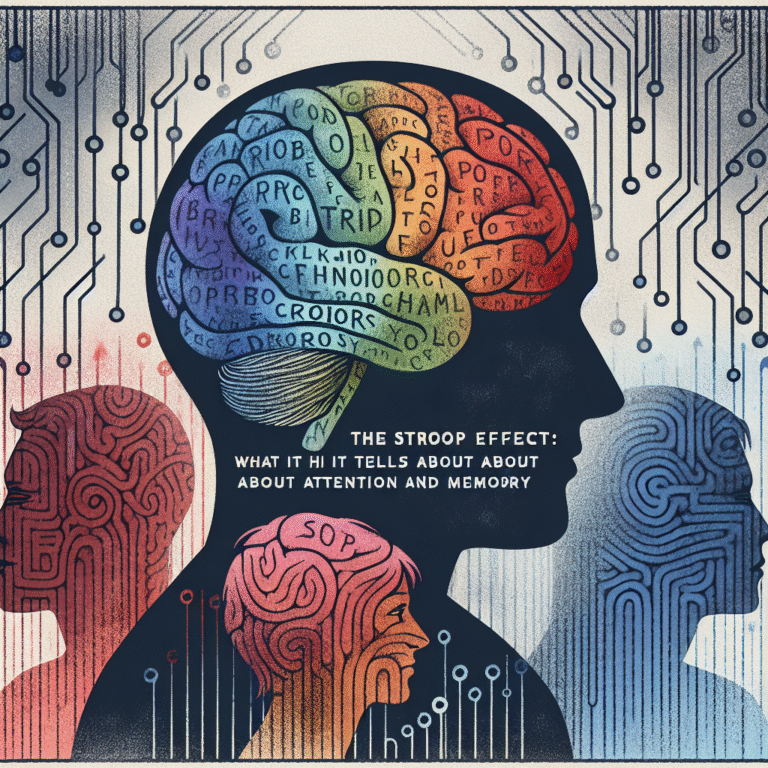
Introduction
Imagine walking into a café, the aroma of freshly brewed coffee wafting through the air, soothing jazz playing in the background. You glance at the menu and find yourself drawn to a specific pastry you’ve never considered before. Was it the music, the ambiance, or perhaps a subtle cue in the environment influencing your choice? From Subliminal Messages to Everyday Choices: Understanding Priming Effects reveals a fascinating intersection of psychology and daily decision-making, showcasing how hidden cues can shape our preferences in profound ways.
The Mechanics of Priming: What You Need to Know
What is Priming?
Priming is a psychological phenomenon where exposure to one stimulus influences the response to another stimulus. It works subtly, nudging our thoughts and behaviors without our conscious awareness. This section will explore how these unconscious cues arise and manifest in our daily lives.
The Science Behind Priming
Research has shown that priming effects can occur through various mediums—visuals, sounds, and even smells. A foundational study by Bargh et al. (1996) demonstrated that individuals exposed to words related to old age walked more slowly in the hallway afterward. This study was groundbreaking for its demonstration of from subliminal messages to everyday choices: understanding priming effects in real time.
Types of Priming
- Semantic Priming: Occurs when exposure to one word influences the response to another related word.
- Conceptual Priming: Involves activating certain concepts that influence how we categorize information.
- Repetition Priming: Happens when previously encountered information increases the likelihood of recognizing or recalling it later.
| Type of Priming | Description | Example |
|---|---|---|
| Semantic Priming | Related words influence each other. | Hearing "doctor" makes you think of "nurse." |
| Conceptual Priming | Activating concepts triggers related behaviors. | Seeing a photo of a beach makes you desire a vacation. |
| Repetition Priming | Past exposure enhances later recognition ability. | Familiarity with a brand logo makes it more appealing. |
Real-World Applications of Priming
Marketing and Advertising
From Subliminal Messages to Everyday Choices: Understanding Priming Effects is especially prominent in marketing strategies. Advertisers leverage priming to evoke emotions or associations related to their products. For example, a luxury car commercial may feature serene landscapes accompanied by uplifting music, fully intending to prime viewers for feelings of aspiration and success.
Case Study: Coca-Cola’s Use of Priming
In a 2012 study, participants exposed to imagery related to happiness—like smiling faces and sunshine—while consuming Coca-Cola reported more positive experiences linked to the brand. This illustrates how companies can manipulate consumer choices through strategic priming.
Analysis
This case study demonstrates the effectiveness of priming in brand perception. By activating positive emotions associated with joy and relaxation, Coca-Cola ensures its product is tied to memorable, positive experiences in consumers’ minds.
Education and Learning
Educators can harness the power of priming to enhance learning environments. Strategies such as displaying motivational quotes or images relevant to the subject can prime students to approach material with a positive mindset.
Case Study: Classroom Environment Effects
A study determined that classrooms rich in visual stimuli relating to specific subjects—like science experiments, historical figures, or literary themes—can improve student engagement and retention rates.
Analysis
This case shows how priming can create a conducive learning atmosphere, assisting students in making informed choices about their educational paths.
Personal Decision-Making
In our everyday lives, we often make decisions influenced by priming without even realizing it. For instance, someone feeling stressed may choose comfort food over healthier options, influenced by their emotional state primed by past experiences.
Case Study: Priming in Health Choices
A study published in the journal "Health Psychology" found that individuals presented with healthy food images were more likely to select healthier options for their meals afterward.
Analysis
This highlights the potential for positive priming to encourage healthier eating behaviors, illustrating how we can consciously design our environments to foster better choices.
Priming in Social Situations
Interpersonal Communication
Priming can also affect how we communicate and form perceptions about others. The words we choose and the manner in which we express them can prime misunderstandings or strengthen connections.
Case Study: First Impressions
Research shows that first impressions can be altered significantly by the priming environment. For example, individuals who engaged in conversations in bright, warm settings were more likely to rate others positively than those in harsher, colder environments.
Analysis
This study emphasizes the role of physical environments in shaping social interactions, reminding us to be mindful of our surroundings during important meetings or networking situations.
The Ethical Considerations of Priming
As powerful as priming can be, it raises ethical questions. When does influence cross into manipulation? The line can blur, especially in marketing and advertising. Understanding from subliminal messages to everyday choices: understanding priming effects entails recognizing our responsibility in how we use these techniques.
The Dark Side of Priming
While priming can be beneficial, there are dangers. Subliminal advertising, for instance, has often been criticized for its potential to manipulate consumers in ways they aren’t consciously aware of. Consider the infamous "Drink Coca-Cola" subliminal message campaign from the 1950s, which, despite its lack of lasting effectiveness, sparked a significant ethical debate.
Conclusion
From Subliminal Messages to Everyday Choices: Understanding Priming Effects is an essential exploration of how subtle cues shape our perceptions and decisions. This understanding can empower individuals to make better choices, be it in their personal lives, professional settings, or when interacting with brands. By being aware of the priming effects in our environments, we can harness these cues to our advantage and potentially lead happier, healthier lives.
Actionable Insights
- Create Positive Environments: Surround yourself with stimuli that foster well-being, whether it’s inspirational quotes or soothing music.
- Mindful Consumption: Before making choices, reflect on what external factors might be influencing you.
- Educate Others: Share your knowledge of priming with friends and colleagues to promote awareness and positive practices.
FAQs
1. What are subliminal messages?
Subliminal messages are stimuli that are presented below the threshold of conscious awareness, aiming to influence behaviors and attitudes without explicit acknowledgment.
2. How does priming work?
Priming works by activating certain associations or thoughts in our minds, which can influence how we perceive and respond to related stimuli.
3. Can priming effects be measured?
Yes, researchers use various experimental designs, such as reaction time tests and choices in controlled environments, to measure priming effects.
4. Are priming effects long-lasting?
Priming effects can vary in duration; while some may quickly dissipate, others can have lingering influences based on repeated exposure.
5. How can I utilize priming in my daily life?
You can utilize priming by consciously surrounding yourself with positive stimuli, such as encouraging images or music, and being mindful of environments when making decisions.
By unraveling the connections between our subconscious prompts and conscious actions, from subliminal messages to everyday choices: understanding priming effects can transform both personal and societal landscapes, leading us toward more informed, intentional lives.

















